Wat Lok Moli: a beautiful Lanna ancient temple in Chiang Mai
Wat Lok Moli is one of the oldest Buddhist temples in Chiang Mai. The exact date of its construction is unknown. The first mention of the temple appears in the 14th century, to be exact, in 1367.
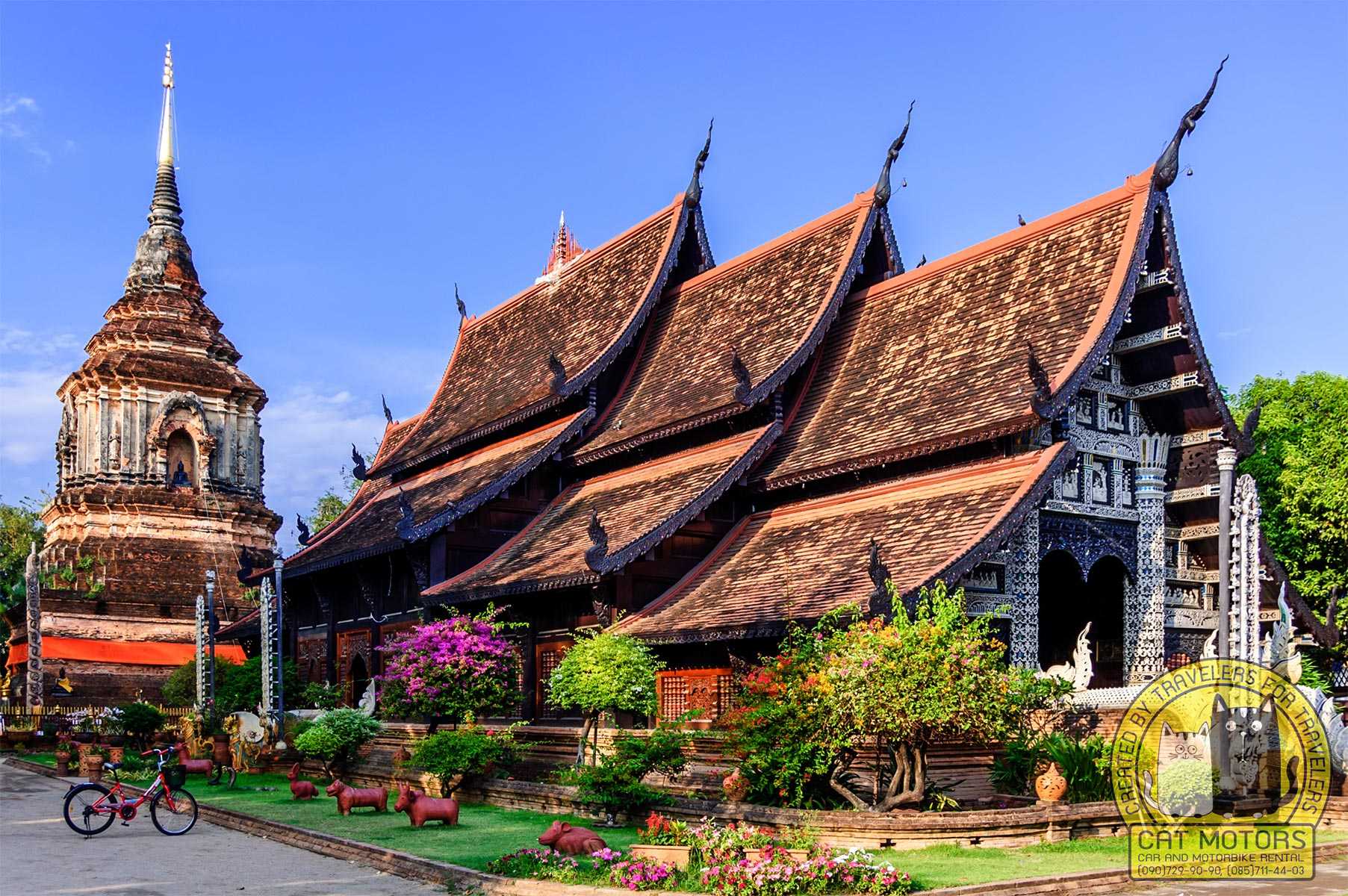
The history of the temple says: the twelfth king of the Mengrai dynasty, named Ket, or Phra Kaew Muang, invited ten monks from Burma to the city. Their purpose was to spread Theravata Buddhism in northern Thailand. It was these invited monks who founded Wat Lok Molee.
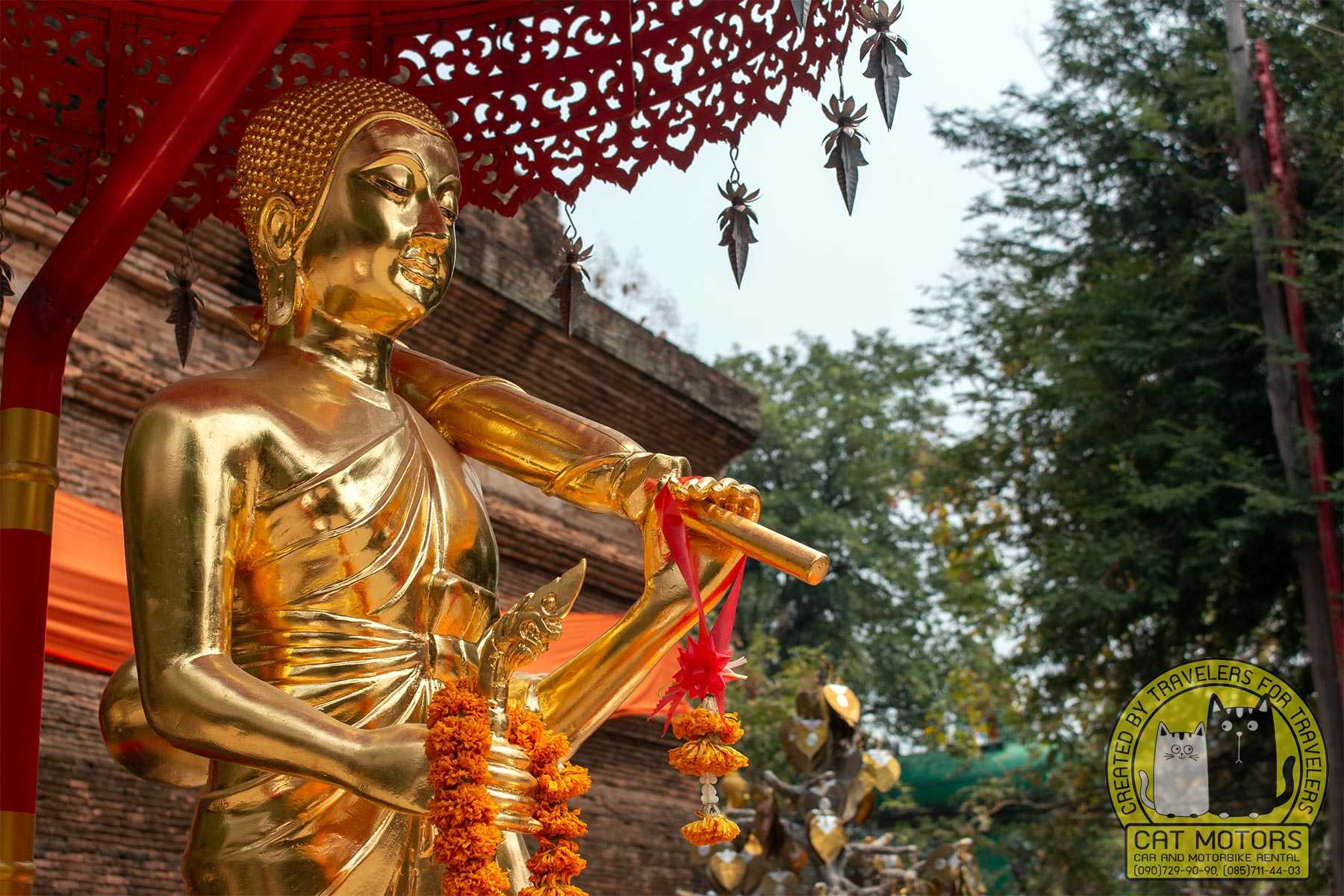
At one time the temple was of royal importance. The ruling Mengrai family took it under their protection and responsibility. After their deaths, the ashes of several members of the dynasty were buried in Wat Lok Moli in recognition of the temple’s high status.
In 1527, King Ketklao, also known as Phra Kaew Mueang, founded a large chedi pagoda with a high spire in the temple. The chedi has been restored several times over the centuries and is in very good condition. It is based on a large square base. Each side of the top of the chedi has its own niche in which there is an image of the Buddha. This style of Buddhist chedi is called Prasat.
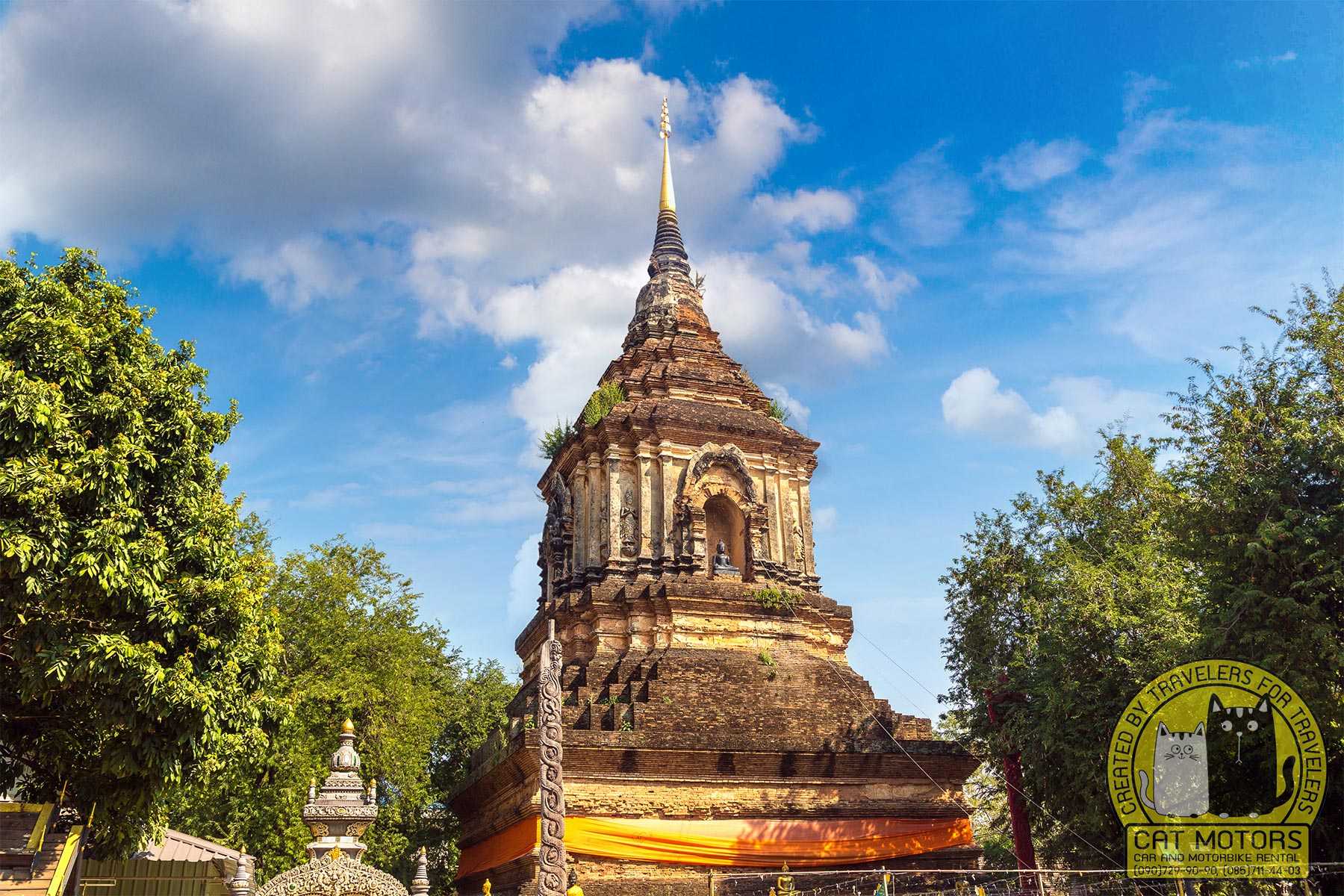
The niches of the chedi are flanked on both sides by images of mythological celestial beings, known in Thai Buddhism as Tevada, who are revered by Thais. Also, the chedi contains the ashes of several kings of the Mangrai dynasty, who ruled the Kingdom of Lanna. Currently, the brickwork of the great chedi remains almost entirely bare, which distinguishes it from the other urban chedi, most of them covered with stucco.
The temple’s magnificent viharn (assembly hall) was built in 1545. It is the main building of the Wat Lok Moli Temple and has a north-south orientation, although most Buddhist temples in northern Thailand are oriented toward the east, toward the rising sun.
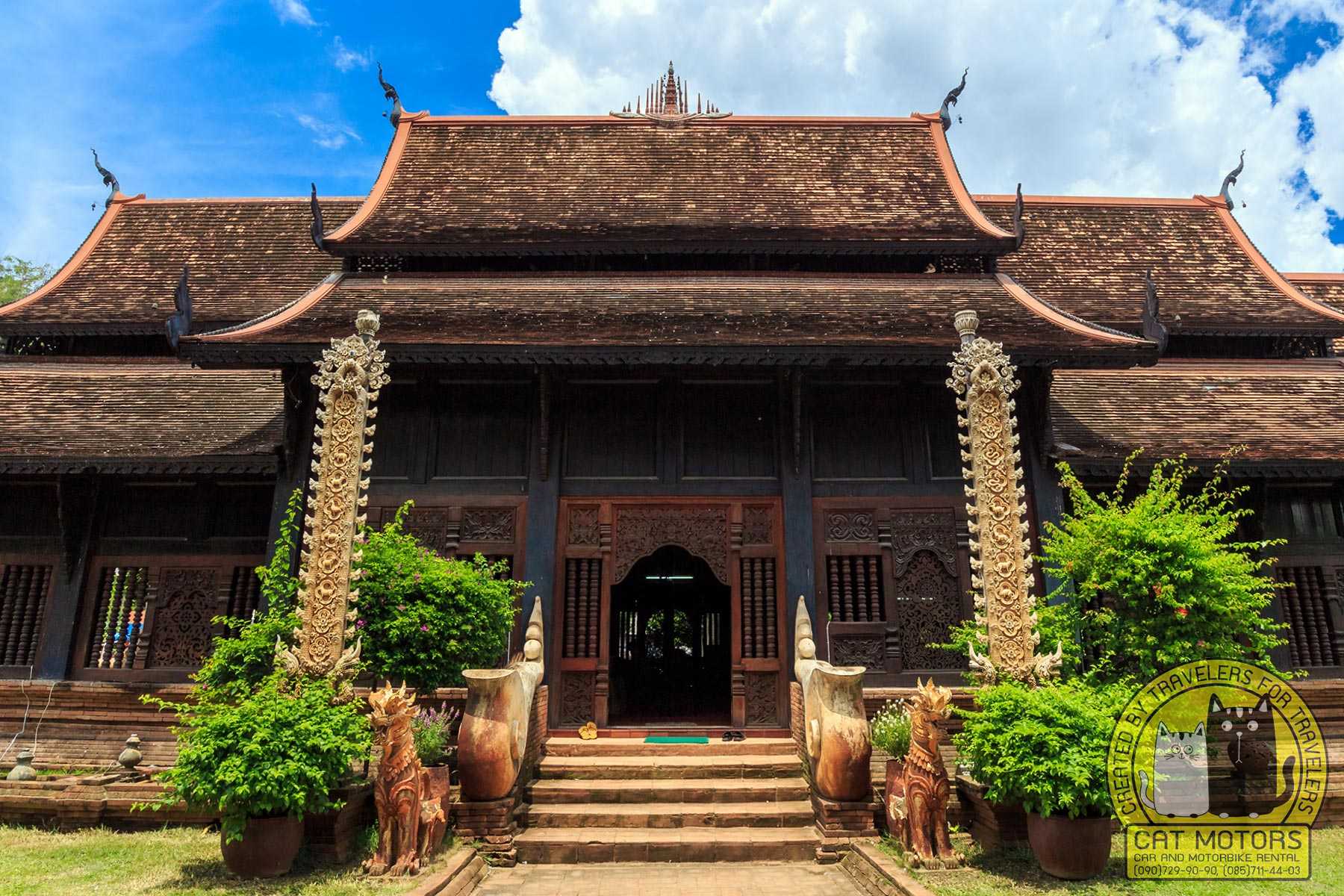
Monks chanted mantras here until Chiang Mai was invaded by Burmese troops in 1558. During the Burmese occupation, the temple was abandoned and restoration work only began in the early 19th century, when the Burmese lost power.
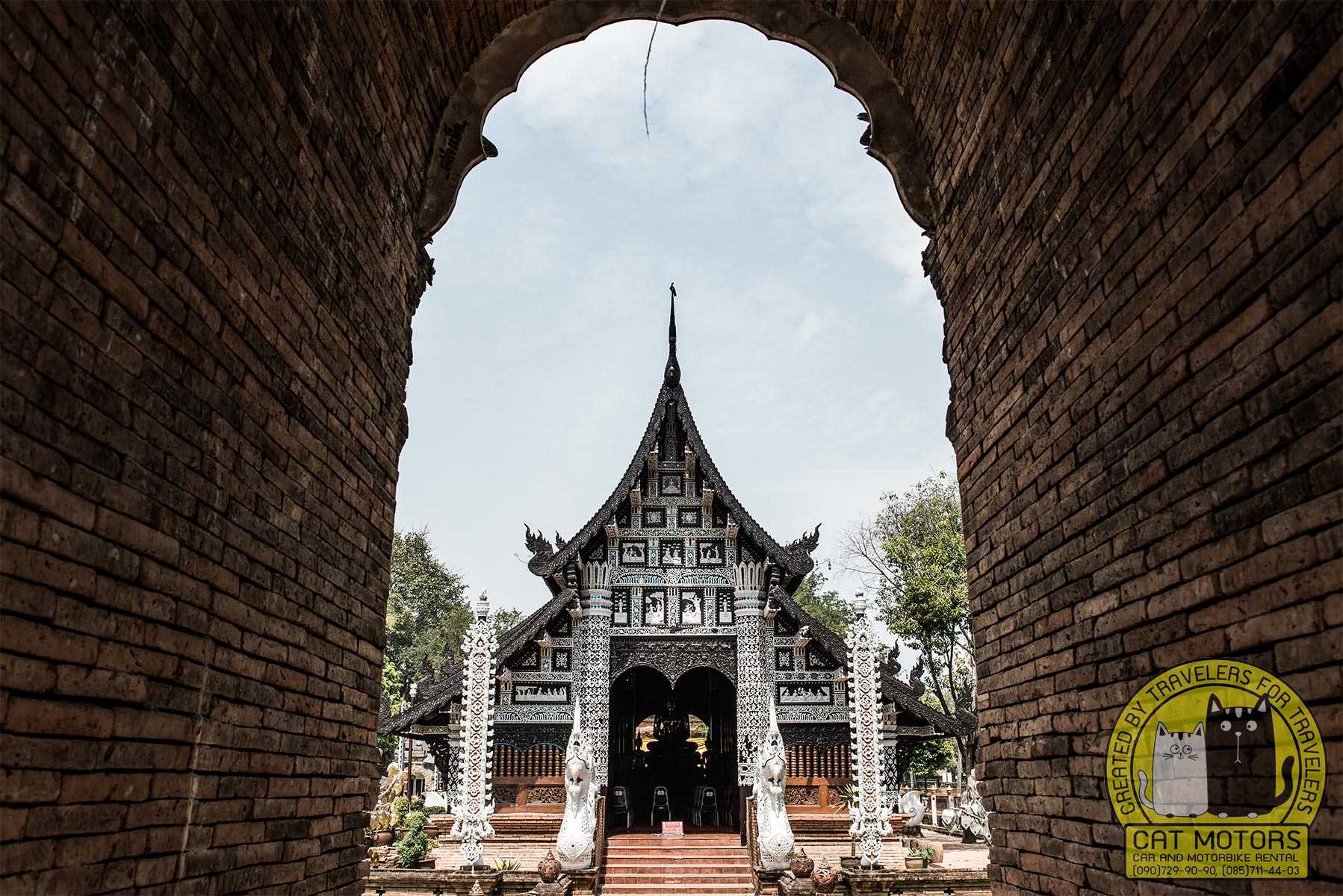
Noteworthy are the sculpted Nagas, large serpents that came into Thai culture from Indian mythology, and the wooden facade of the meditation room. The temple has very friendly monks and many interesting statues related to Buddhism as well as those borrowed from Hinduism. The entrance to the temple is guarded by two armed yaksha demons, so that only people with a pure heart and pure thoughts could enter here.
There is another interesting detail on the grounds of the temple Wat Lok Molee. It has to do with the Chinese calendar. Here are twelve small chedis of different shapes, which correspond to the twelve animals of the Chinese calendar, they are located for clarity next to each other. However, there is one difference. Whereas in the Chinese calendar, the last animal is the pig, here instead of the pig is… elephant! Don’t be surprised, the fact is that the elephant is the symbol of Chiang Mai. And, as you can see, there is a place for it in the local interpretation of the Chinese calendar.
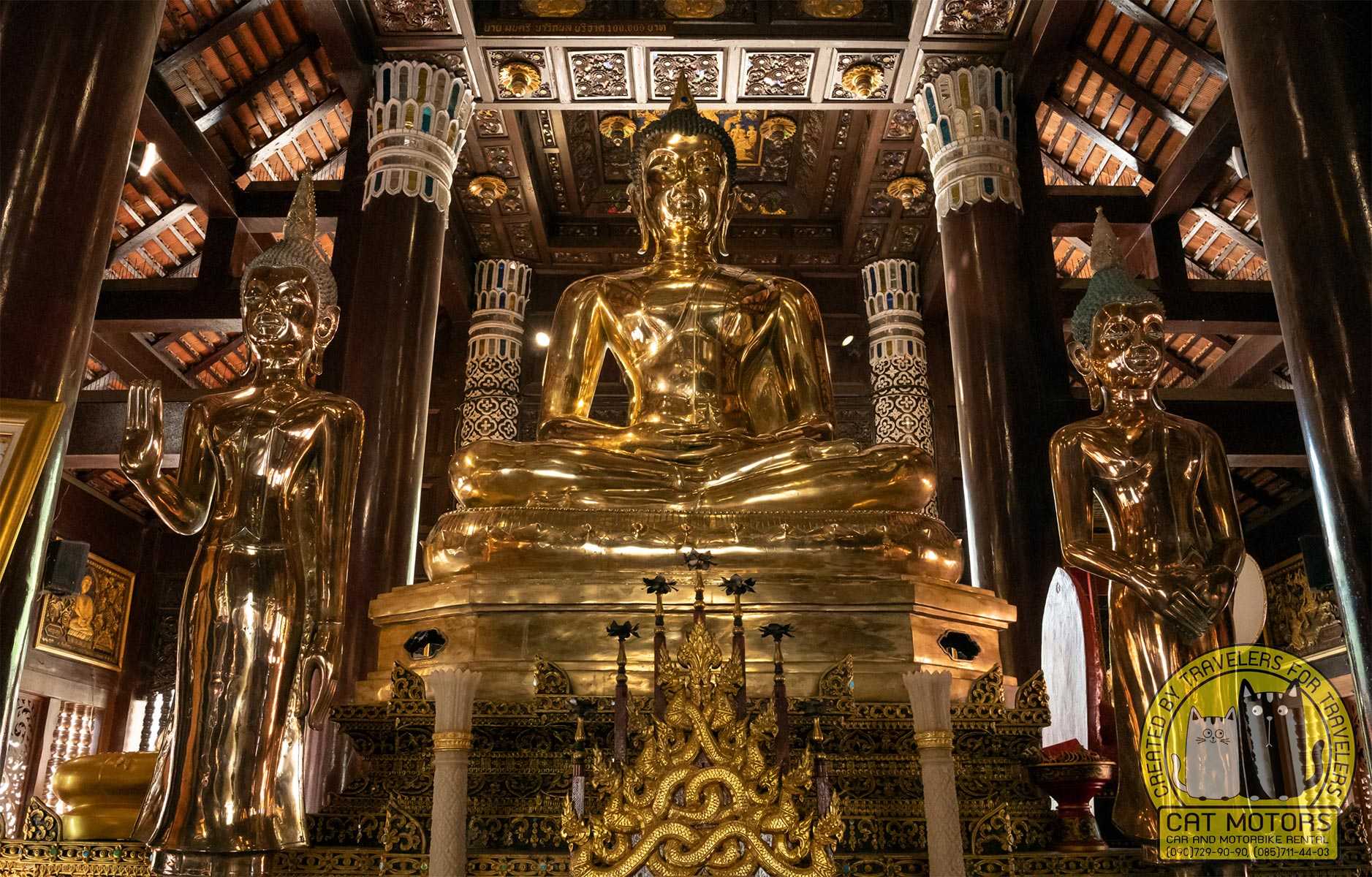
In addition, the temple has many benches for visitors to rest in the shade, which is important in hot tropical weather. There are even big beautiful swings made of teak wood. And if you look into the hidden corners of the temple, you might find a large handmade teak panel with elephants carved on it.
Video Review
FAQ
Wat Lok Moli is one of the most historically significant temples in Chiang Mai. It is famed for its well-preserved Lanna-style architecture and has been a site of religious significance for many centuries. The exact origins are somewhat mysterious, which only adds to its allure.
The exact date of Wat Lok Moli’s construction is unknown, but it is believed to have been built during the late 14th to early 15th centuries. The ashes of members of the Mengrai Dynasty, the rulers of the Lanna Kingdom, are interred within the chedi, indicating its royal connection.
Wat Lok Moli showcases the Lanna architectural style, which is distinguished by its steeply sloping roofs, rich woodwork, and intricate carvings. One of the highlights is the temple’s chedi, a massive, finial-shaped structure covered in gold leaf, which stands in stark contrast to the dark wood of the viharn (main worship hall).
As with any Buddhist temple, it is important to dress respectfully. This means wearing clothing that covers your shoulders and knees. Shoes should be removed before entering the main worship hall. Visitors should also speak softly and behave respectfully within the temple premises.
As of my last update, there is no entry fee to visit Wat Lok Moli. However, donations to maintain the temple are always appreciated.
Wat Lok Moli is usually open daily from early morning till evening, typically around 6:00 AM to 5:00 PM.
The chedi at Wat Lok Moli is believed to house the ashes of several members of the Mengrai Dynasty. The gold leaf covering is a common practice in Buddhism, symbolizing purity and enlightenment.
Inside the viharn, you’ll find a large, impressive Buddha image that is a focal point for prayers and offerings. The intricately carved woodwork on the interior of the viharn is also worth noting.
As a functioning temple, Wat Lok Moli holds Buddhist ceremonies and festivals throughout the year. One of the most significant is Makha Bucha, a key date on the Buddhist calendar that typically falls in February or March.
Yes, monks at Wat Lok Moli often interact with visitors. They may be available for a chat, and some may even offer informal discussions on Buddhism.
Wat Lok Moli is located within the old city of Chiang Mai, which is home to many other temples such as Wat Phra Singh and Wat Chedi Luang. The Chiang Mai City Arts & Cultural Center is also nearby and is a must-visit for anyone interested in the local history and culture. For food, you’ll find a multitude of local restaurants and street food stalls offering Thai classics like Khao Soi, a northern Thai noodle dish.
Wat Lok Moli is located in the northern part of Chiang Mai’s old city, making it quite accessible. If you’re staying in the city center, you can easily walk or bike to the temple. Alternatively, you can take a songthaew (red truck taxis common in Chiang Mai) or a tuk-tuk. Travel time would usually be around 10-15 minutes depending on your starting location within the city.
Discover the beauty and culture of Northern Thailand with our detailed travel guides. Highlighting the top scenic routes and local attractions, our guides ensure you experience the best the region has to offer. Begin your journey by visiting our motorcycle rental in Chiang Mai. Don’t forget to review our terms and conditions for a seamless experience. With these resources, you can explore charming villages and scenic mountain trails with confidence.
Our travel advice sections provide essential tips on staying safe and enjoying your journey to the fullest. Learn about the best times to visit major attractions, participate in cultural events, and get recommendations on the best local cuisine. These insights will make your trip richer and more enjoyable. Let us help you uncover the true essence of Northern Thailand, ensuring a safe and memorable adventure filled with unique experiences and stunning scenery.
- Author: Krit Sorenser
- Updated: 15/09/2025
- No Comments




